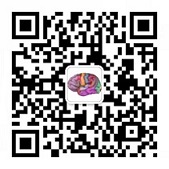Ohtahara Syndrome
Etiologies: Some may have brain structural abnormalities (such as brain perforation malformation, hemimegacephaly, Aicardi syndrome, anencephaly, focal cortical dysplasia, etc.), gene mutations (STXBP1 (about 10-15% of cases), SLC25A22, CDKL5, ARX, KCNQ2, SCN2A, GABRA1, CASK, KCNT1, SCN8A, GABRB2, AARS, BRAT1, CACNA2D2, GNAO1, NECAP1, PIGA, PIGQ, SIK1, etc.) or metabolic abnormalities (such as mitochondrial disorders, non-ketotic hyperglyinemia, pyridoxine dependent epilepsy, PNPO deficiency, carnitine palmitoyl transferase deficiency, etc.), and there can be cross overlap between the three etiologies [1-13].
Age of onset: Onset within 3 months after birth (mostly around 10 days after birth).
Seizure characteristics: The main type of seizures is tonic spasms (may be asymmetric), some may have focal motor seizures, and myoclonic seizures are generally rare (note that it needs to be differentiated from Early Myoclonic Encephalopathy). Some children will develop West Syndrome later.
EEG: Interictal: with a suppression-burst pattern (wakeness and sleep persistence). Ictal: When tonic spasm occurs, there will be a high-amplitude slow wave burst, followed by a diffuse low voltage. Focal ictal rhythms may be seen if there are focal motor seizures [14].
Brain MRI: Some may have abnormal brain structure, and some may be normal in the early stage, and non-specific changes such as atrophy in the later stage may occur.
Developmental progress: often severe developmental delay.
Note: considering that Ohtahara Syndrome and Early Myoclonic Encephalopathy have a lot of overlap in electroclinical features and have similar potential causes, further differentiation between them can no longer provide valuable information for clinical decision-making or determination of prognosis. In 2022, the international anti epilepsy Alliance (ILAE) has classified Ohtahara Syndrome and Early Myoclonic Encephalopathy into early infant developmental and epileptic encephalopathy (EIDEE) [15].
Diagnosis of early infant developmental and epileptic encephalopathy [15]:
Mandatory: Tonic and/or myoclonic seizures; There should be burst suppression pattern or multifocal discharge and Diffuse slowing in the interval of EEG; Onset within 3 months after birth (aadjusted for prematurity); Developmental impairment is present prior to or shortly after seizure onset; Abnormal neurodevelopment including intellectual disability.
Alerts: Normal development at onset, although it is acknowledged that this can be challenging to accurately assess historically; Normal neurological examination, although it is acknowledged that this can be challenging to assess historically or in an infant who has had very frequent seizures and/or received ASMs that may alter their exam.
References
- Stamberger, H., et al., STXBP1 encephalopathy: A neurodevelopmental disorder including epilepsy.Neurology, 2016. 86(10): p. 954-62.
- McTague, A., et al., The genetic landscape of the epileptic encephalopathies of infancy and childhood. Lancet Neurol, 2016. 15(3): p. 304-16.
- Pavone, P., et al., Ohtahara syndrome with emphasis on recent genetic discovery.Brain Dev, 2012. 34(6): p. 459-68.
- Giordano, L., et al., Familial Ohtahara syndrome due to a novel ARX gene mutation.Am J Med Genet A, 2010.152A(12): p. 3133-7.
- Kato, M., et al., Clinical spectrum of early onset epileptic encephalopathies caused by KCNQ2 mutation.Epilepsia, 2013. 54(7): p. 1282-7.
- Touma, M., et al., Whole genome sequencing identifies SCN2A mutation in monozygotic twins with Ohtahara syndrome and unique neuropathologic findings.Epilepsia, 2013. 54(5): p. e81-5.
- Kodera, H., et al., De novo GABRA1 mutations in Ohtahara and West syndromes.Epilepsia, 2016. 57(4): p. 566-73.
- Saitsu, H., et al., CASK aberrations in male patients with Ohtahara syndrome and cerebellar hypoplasia. Epilepsia, 2012. 53(8): p. 1441-9.
- Yang, Y., et al., Phenotypic spectrum of patients with GABRB2 variants: from mild febrile seizures to severe epileptic encephalopathy. Dev Med Child Neurol, 2020. 62(10): p. 1213-1220.
- Saitsu, H., et al., Compound heterozygous BRAT1 mutations cause familial Ohtahara syndrome with hypertonia and microcephaly. J Hum Genet, 2014. 59(12): p. 687-90.
- Gertler, T., et al., KCNT1-Related Epilepsy, in GeneReviews((R)), M.P. Adam, et al., Editors. 1993: Seattle (WA).
- Martin, H.C., et al., Clinical whole-genome sequencing in severe early-onset epilepsy reveals new genes and improves molecular diagnosis. Hum Mol Genet, 2014. 23(12): p. 3200-11.
- Alsahli, S., W. Al-Twaijri, and F. Al Mutairi, Confirming the pathogenicity of NECAP1 in early onset epileptic encephalopathy. Epilepsia Open, 2018. 3(4): p. 524-527.
- 李世绰. 临床诊疗指南, 癫痫病分册. 第2版. 北京 : 人民卫生出版社, 2015.
- Zuberi, S.M., et al., ILAE classification and definition of epilepsy syndromes with onset in neonates and infants: Position statement by the ILAE Task Force on Nosology and Definitions. Epilepsia, 2022.

 English
English  简体中文
简体中文 